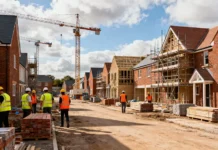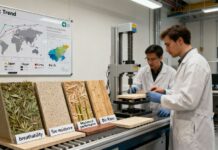Councillors will also consider endorsing an Australian-first online tool, piloted by the city, that enables architects and developers to integrate a range of green infrastructure outcomes at the planning stage.
City of Melbourne councillors are considering proposed changes to the planning scheme to deliver more sustainable buildings, which will lead to lower energy and water bills and a more sustainable and resilient city.
The amendment proposes using established ratings tools, which are well known and accepted by the property and development industry, to assess the environmental performance of buildings.
Councillors will also consider endorsing an Australian-first online tool with a focus green infrastructure, including contribution to biodiversity, ecology and cooling the city.
Green Factor tool
The Melbourne Green Factor tool, developed and piloted by the City of Melbourne, is an evidence-based tool that enables architects and developers to integrate a range of green infrastructure outcomes at the planning stage.
Environment portfolio chair councillor Cathy Oke said the Green Factor tool would help developers measure the green credentials of their design at the planning stage and make it easier to comply with proposed new standards.
“It will help build more sustainable buildings and communities by measuring the quality and quantity of green infrastructure, such as green roofs, walls and gardens,” she said.
As well as reducing greenhouse gas emissions, Oke reckoned encouraging investment in new buildings that are more sustainable and energy efficient will also help support recovery from Covid-19.
“Zero net emissions buildings could provide an economic benefit of more than $4bn to the municipality by 2050,” she said.
“Melbourne’s climate is getting hotter and we’re experiencing more extreme weather events. We need to deliver more sustainable buildings and green infrastructure to cool our streets, homes and offices and save water.
“Green Star rated buildings produce 55 per cent fewer greenhouse gas emissions and use 66 per cent less electricity than the average Australian building.” “We must change the way we plan and deliver infrastructure to respond to the climate and biodiversity emergency.”
The proposal seeks ministerial authorisation to amend the planning scheme – a process which would involve extensive engagement with industry and the community and a ‘phase-in’ period of at least 18 months.
“Sustainable design can and should play a role in supporting our economic recovery from Covid-19 by encouraging investment in things like solar panels, green roofs and walls, and energy efficient materials and better insulation,” added planning portfolio chair, councillor Nicholas Reece.
“Many companies are already moving towards more sustainable development because this is what tenants and buyers want. Buildings are the biggest contributor to greenhouse gas emissions in our municipality, accounting for 66 per cent of all our emissions.
“Delivering better buildings will ensure Melbourne remains competitive globally and help us to meet our target of zero emissions by 2040.”






























